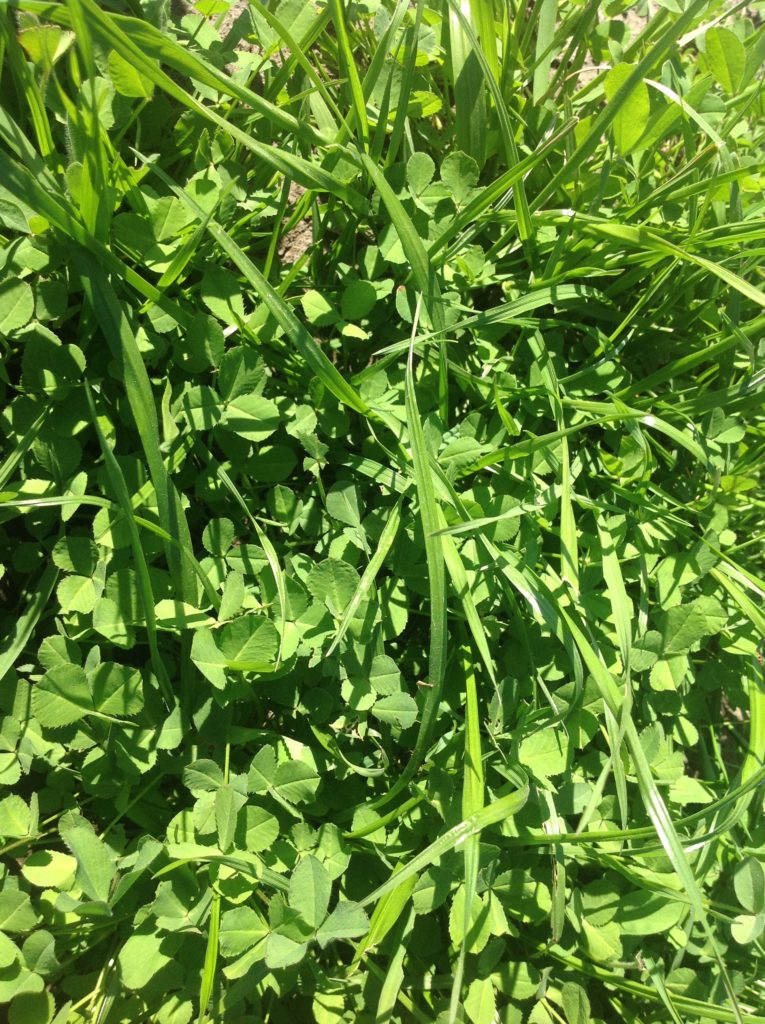Every Spring it seems like I am asked about the utilization of FIXatioN in pasture mixes that are spring-sown. Should they be incorporated in Spring sown mixes?
The answer is absolutely! While the grower will not realize the same amount of Spring growth as they would when Fall is sown, FIXatioN will contribute to the amount of forage produced. FIXatioN will go to flower in the early summer, however every blossom is capable of producing over 100 seeds. Seeds, that will lay dormant on the soil until the moisture conditions become optimal for them to sprout and regrow. It is never too early to begin creating a productive seed bank in the pasture. This seed bank will allow FIXatioN to fill in bare areas in the soil. After the initial seeding, it may be necessary to apply more FIXatioN on occasion to establish a good seed bank from which the plant can re-establish.
I often hear statements that the farmer wants a clover that is active in the summer. While it is nice to see clover in the pasture, it is important to note that ideally, you want maximum clover growth when you are realizing maximum grass growth. That way we balance the ratio by having a high crude protein source, clover, when we have a high fiber source. Too much white clover can actually be detrimental to a pasture, as the thick shallow root system can intercept summer moisture before it gets to the roots of the grasses. Annual clovers do not compete with the grasses during moisture deficits, thereby improving the health and stand of the grasses. If utilizing a re-seeding clover like FIXatioN, the seeds formed in early summer will be there in the Fall to begin the growth cycle again.
From a nitrogen standpoint, annual clovers are superior to white clovers. White clover, a perennial, retains much of the nitrogen that it produces for its own needs. Very little nitrogen is contributed by the rooting system to surrounding plants. This is easily confirmed by observing the grass growing next to white clover. If it was the recipient of excess nitrogen you would see an increase of dark green forage similar to that at the edge of a manure deposit. The majority of the nitrogen benefit from white clover pasture is from the forage cycling through the livestock. Annual clovers also release nitrogen from the forage passing through the animal, but unlike their perennial relatives when the annual clover ends its life cycle all of the nitrogen stored in its unconsumed forage is released back into the soil.
After the annual clover decomposes, the soil is left with channels created by the decayed tap roots. These tap roots can break up the hard pan, allowing the rooting structure of the grasses to follow the channels formed by the clover deeper into the soil, potentially improving summer performance. These channels also allow for nutrients and oxygen to travel deeper into the soil, improving microbial health.
When it comes to pasture improvement diversity is important, both above and below the surface of the soil. One more advantage of utilizing re-seeding annual clovers like FIXatioN is that once it has set seed you can spray your pasture with a broadleaf herbicide to remove the detrimental weeds thereby keeping your pasture lush and highly productive.
FIXatioN Balansa Clover is the perfect complement to any pasture mix no matter when the seeding time is. When utilizing FIXatioN in your pasture mix I would recommend that you not exceed 10% of the mix with 5% being ideal in most perennial pastures. Balansa Clover is considered a low bloat risk as there have not been any confirmed instances of bloat globally.
For a printable, PDF version of this blog, click below.





